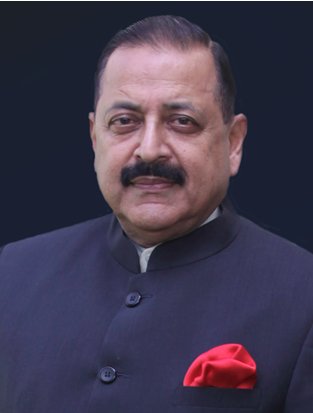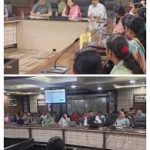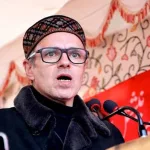It began with a crack—barely visible, tucked away in the weld joint of a pressure feedline on a Falcon-9 booster. A minor flaw, perhaps, in the grand machinery of spaceflight. But for India, it was a moment of reckoning. Our scientists at ISRO, vigilant and uncompromising, demanded answers. They insisted on repairs, not workarounds. And in doing so, they didn’t just protect a mission—they safeguarded a dream.
That dream took flight on June 25, 2025, when Group Captain Shubhanshu Shukla, an Indian Air Force officer and ISRO-trained astronaut, soared into orbit aboard the Axiom-4 mission. Docking with the International Space Station (ISS) a day later, he became the face of India’s next great leap—not just into space, but into the future of human-centric science, medicine, and technology.
This wasn’t a ceremonial voyage. It was a scientific crusade. Shukla carried with him seven microgravity experiments, each meticulously designed by Indian researchers to answer questions that matter—not just to astronauts, but to farmers, doctors, engineers, and students across our nation.
Consider the sprouting of methi and moong seeds in space. It sounds simple, almost poetic. But its implications are profound. In the confined quarters of a spacecraft, where every gram of nutrition counts, understanding how Indian crops behave in microgravity could redefine crew diets for long-duration missions. More importantly, it could inspire innovations in vertical farming and hydroponics back on Earth, especially in regions battling soil degradation and water scarcity.
Then there’s the study of Indian tardigrades—microscopic creatures known for their resilience. Revived from dormancy, these tiny organisms were observed for survival, reproduction, and genetic expression in space. Their behavior could unlock secrets of biological endurance, informing everything from vaccine development to climate-resilient agriculture.
Shukla also conducted a myogenesis experiment, examining how human muscle cells respond to space conditions and nutritional supplements. The findings could revolutionize treatments for muscular degeneration, benefiting not just astronauts but elderly patients and those recovering from trauma.
Other ongoing experiments include the growth of cyanobacteria—organisms that could one day support life-support systems in space—and the passive exposure of Indian crop seeds like rice, cowpea, sesame, brinjal, and tomato to microgravity. These seeds will be cultivated across generations to study inherited changes, potentially leading to new crop varieties adapted to extreme environments.
Even human-machine interaction was put to the test. Shukla performed web-based assessments to understand how microgravity affects our ability to interact with electronic displays—a crucial insight for designing intuitive interfaces for future space stations and spacecraft.
These are not abstract pursuits. They are deeply rooted in the Indian ethos of science for society. Every experiment aboard Axiom-4 carries the potential to touch lives on Earth—whether it’s a tribal farmer in Odisha, a schoolchild in Shillong, or a frontline doctor in Ladakh.
The mission also showcased India’s growing stature in global space diplomacy. Our insistence on safety protocols led SpaceX to identify and repair a potentially catastrophic flaw. Our collaboration with NASA, ESA, and Axiom Space reflects a new era of equal partnership, where India is not just participating but leading.
Throughout the mission, ISRO’s flight surgeons monitored Shukla’s health, ensuring his physical and psychological well-being. He remained in high spirits, interacting with students across India—from Lucknow to Trivandrum, Bangalore to Shillong—igniting young minds with the possibilities of science and space.
Shukla has since returned, and he brings back with him the rich wealth of data, samples, and insights he brings back will fuel India’s upcoming Gaganyaan mission and the Bharat Space Station.
This is not just about one astronaut. It’s about a nation rising. It’s about transforming space science into public service. It’s about ensuring that the benefits of microgravity research reach every corner of India—from satellite internet in remote villages to regenerative medicine in urban hospitals.
In the words of our Prime Minister Narendra Modi, Gaganyaan is about placing an Indian in space by Indian means. Axiom-4 is the rehearsal, the proof of concept, the bridge between aspiration and achievement.
And as we look up at the stars, we do so not with awe alone, but with intent. Because for India, the sky is not the limit—it is the laboratory.
(The Author is Union Minister of State (Independent Charge) for Science and Technology; Earth Sciences and Minister of State for PMO, Department of Atomic Energy, Department of Space, Personnel, Public Grievances and Pensions. Courtesy: PIB)








